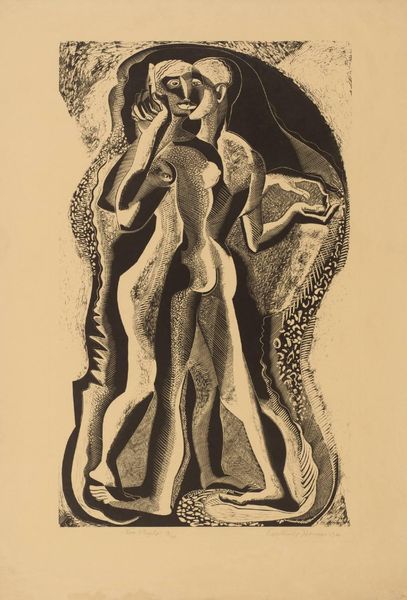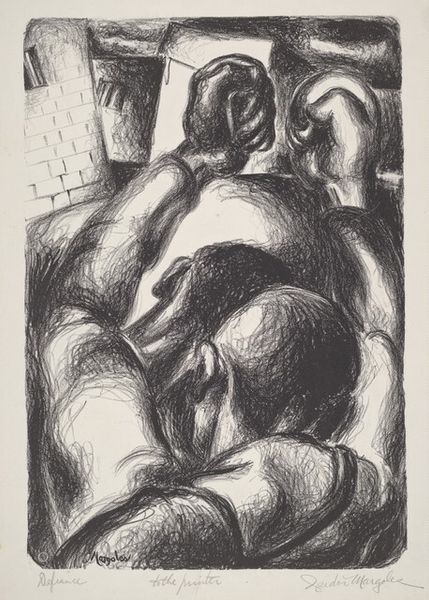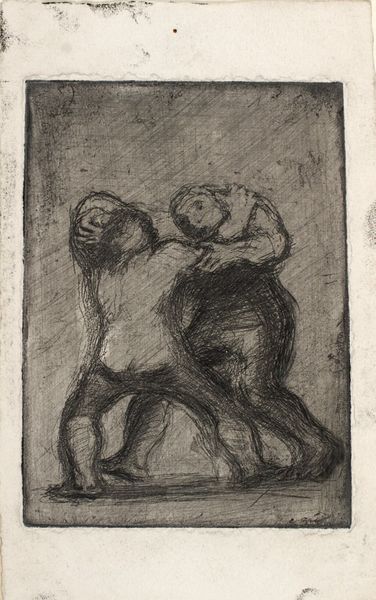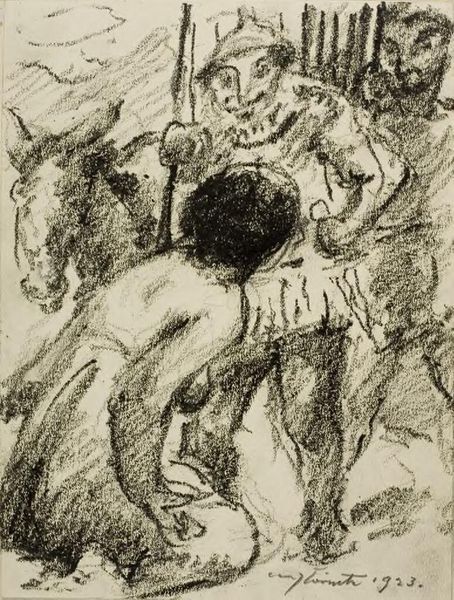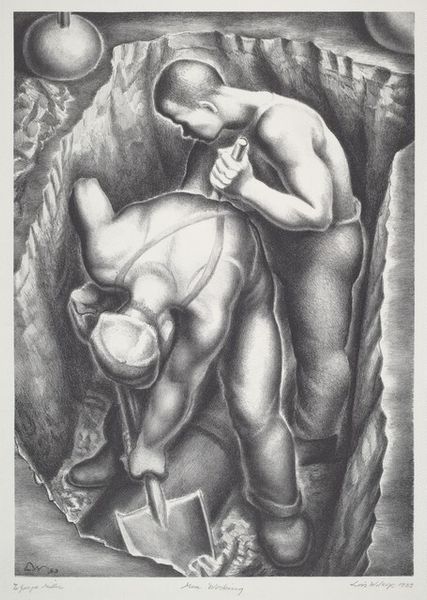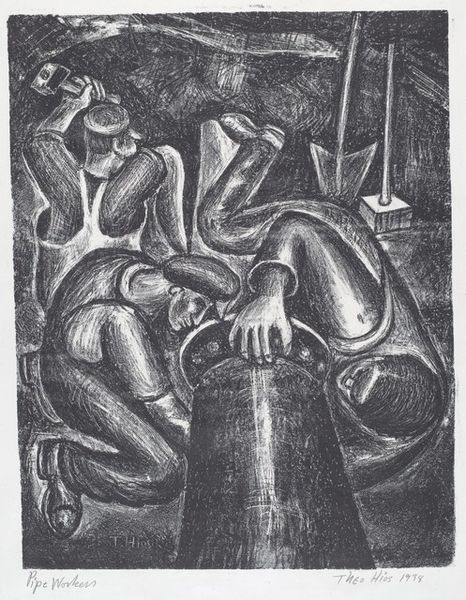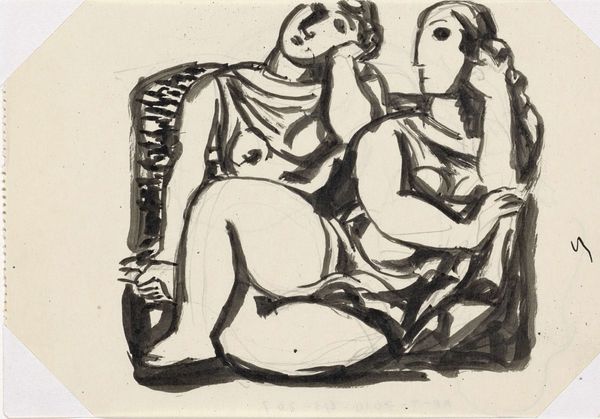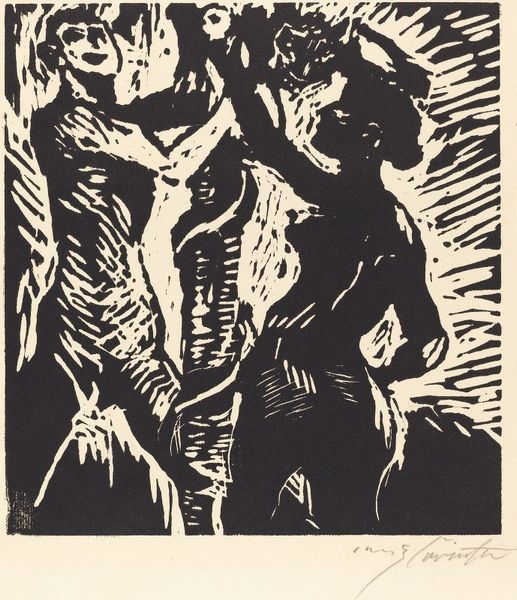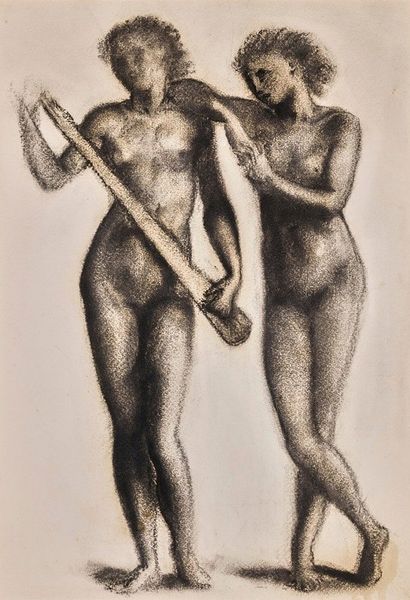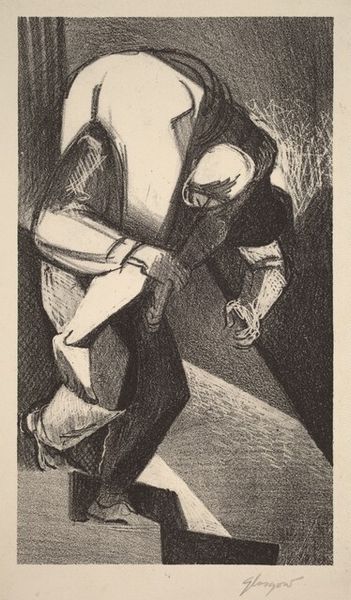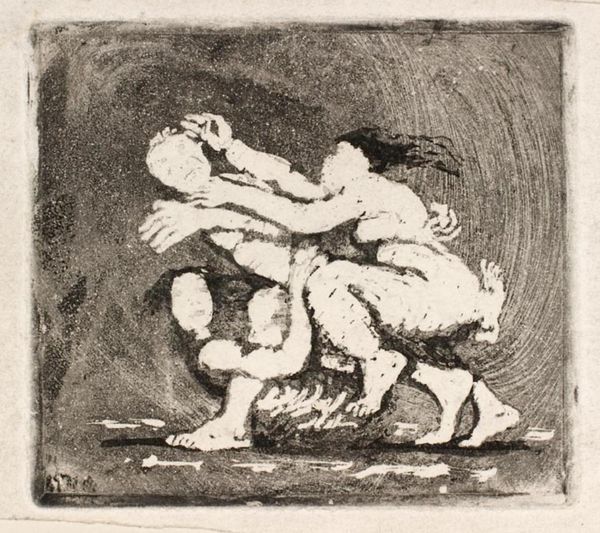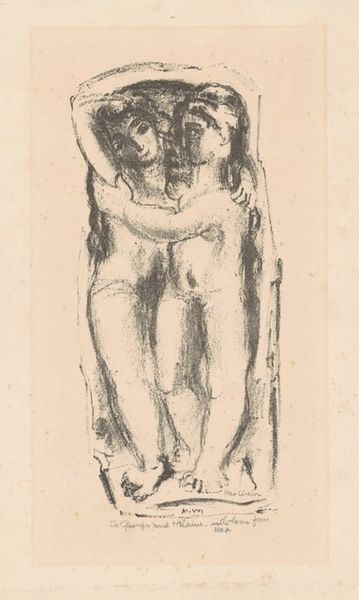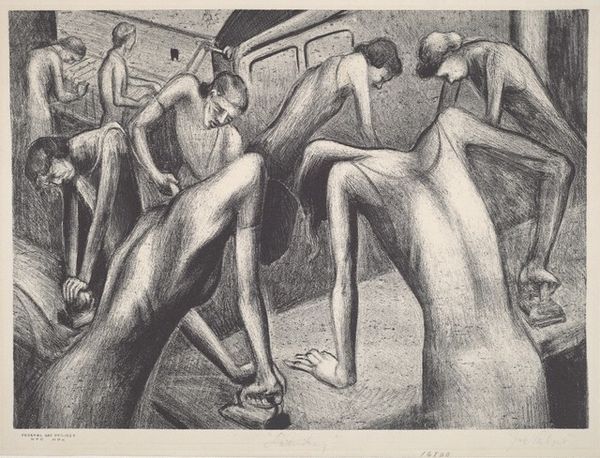
Dimensions: Image: 342 x 267 mm (irregular) Sheet: 420 x 318 mm
Copyright: National Gallery of Art: CC0 1.0
Editor: This print, "Boxers," made in 1944 by George J. Marinko, depicts two figures engaged in a boxing match. There's a powerful dynamism, like a frozen moment of action, but the lack of detail also makes them feel a bit anonymous. What stands out to you most when you look at this? Curator: The dynamism certainly leaps out. But it is also in the conscious obscuring of individuality. Notice how the faces are shadowed, generic. This removes the sense of a personal rivalry. Boxing is ritual combat. Do you see how that geometrical compression is similar to classical friezes celebrating athletic glory? The symbols tell us it's about something larger than two individuals. Editor: You mean like a representation of strength, resilience, maybe even societal conflict playing out on a smaller scale? Curator: Precisely. Consider also the date, 1944. What major global conflict defined that year? What visual rhetoric was present in the political posters? The simplified forms, the focus on strength – how do those elements resonate with those wartime images? This piece might tap into a collective understanding of struggle and perseverance, reflected through this image. Editor: So, it's less about the literal boxing match and more about these broader themes conveyed through the symbolism. I hadn't thought of it that way. Curator: The power of visual language resides in its ability to distill complex emotions and narratives into potent, recognizable forms. The artist harnesses familiar symbols to express shared experiences. What has changed, though, from Antiquity or the war era to today? How does the contemporary context in which a viewer is living impact interpretation? Editor: It makes me realize how much context shapes my perception of a work like this. Seeing the deeper symbols helps unpack its emotional weight. Thanks. Curator: Indeed, art invites us to decipher the visual codes that connect us to shared human experiences across time. Looking closely reveals continuity and change in our collective memory.
Comments
No comments
Be the first to comment and join the conversation on the ultimate creative platform.
